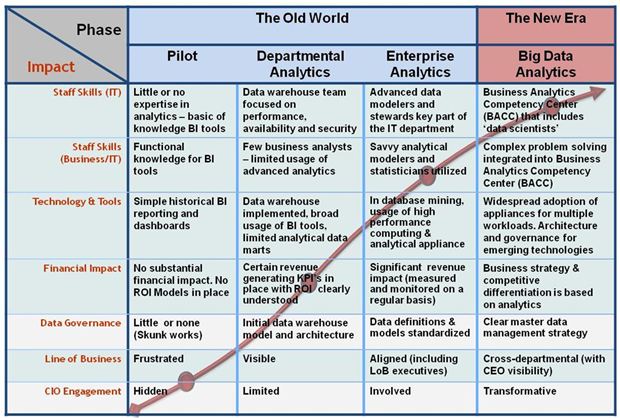- Category: October 2011
 The "Big Data" phenomenon seems to have appeared from almost nowhere, but in reality, some aspects of this emerging trend are not new.
The "Big Data" phenomenon seems to have appeared from almost nowhere, but in reality, some aspects of this emerging trend are not new.
Other aspects of "Big Data" are, however, indeed new. The variety of the data sources is growing at a rapid rate, particularly as we move into the semi-structured and unstructured realm - e.g. social media interactions, rich media files and geospatial information. The other emerging factor that organizations need to contend with is the increased velocity at which data is being generated, such as real-time sensor data feeds from smart meters.
"These new aspects of 'Big Data' are creating unprecedented levels of complexity for IT executives, particularly as they realize that these massive data sets cannot be processed, managed and analyzed using traditional databases and architectures," says Philip Carter, Associate Vice President at IDC Asia Pacific. "What is becoming clearer is that the real value from 'Big Data' will be derived from the high-end analytics, predominantly using data mining, statistics, optimization and forecasting type of capabilities to proactively turn this data into intelligence to drive business benefits and better decision making capabilities."
In line with this trend, as businesses in Asia invest to drive growth in emerging markets, they are harnessing analytics-led solutions to gain better customer insights, and manage risk and financial metrics more effectively while striving for unique market differentiation. IDC’s surveys found that business analytics ranked as the top rated technology that would allow organizations to gain significant competitive advantage in the year ahead.
The approach to business analytics in the era of "Big Data", however, will be significantly different to the traditional approach. “For example, one of the key differences between traditional analytics and what we are dealing with in terms of the 'Big Data' era is that we are gathering data that we may or may not need. From an analysis perspective, this means ‘we don’t know what we don’t know’. To run an analysis on 'Big Data', the variables and models are likely to be entirely new. Therefore, a different infrastructure strategy and perhaps most importantly, new skill sets, are required,” adds Philip.
To cope with the challenges that "Big Data" poses, organizations must begin looking at deploying not only the applications traditionally used for Business Analytics (BA), but also the supporting architecture in order to scale efficiently. IDC recommends looking at cloud bursting, the deployment of analytical appliances and creating truly scalable enterprise architectures that leverage the attributes of high performance computing. This approach should also allow for the deployment of new technologies and frameworks to assist with the analysis of large pools of disparate, unstructured data that also requires, of course, new technical skill sets. The next generation business analyst will be more akin to "data scientists". These individuals will have strong statistical skills and will be able to extract information from large datasets and present value to non-analytical experts. They will also have the unique skill of understanding the new algorithms and analytical models that will have the most significant business impact in the short term.
Figure: The IDC Big Data Analytics Maturity Model

In conjunction with the skills dimension, IDC believes that organizations need to be looking at their "Big Data" analytics strategy across the following dimensions:
- Technology identification/deployment
- Business case creation and ROI justification
- Data governance frameworks with clear policies and guidelines around master data management, data quality and data models
- Ensure IT/Business alignment by involving the critical stakeholders at the right time
- Involve the CIO as the supporter of the necessary transformation from an IT perspective that will in turn create the necessary business impact (Source: IDC)
By MediaBUZZ



















